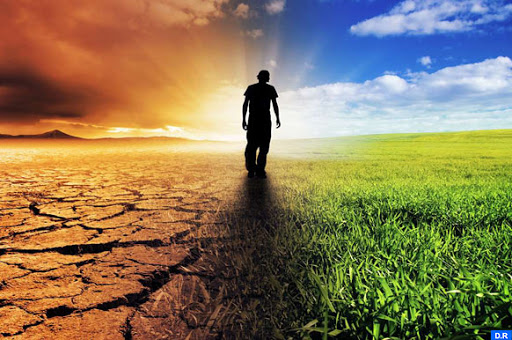Climate Change Worsens U.S. Water Woes
Washington – With simultaneous record floods and drought, flood warnings are affecting more than 13 million Americans in southern states this week, while seven Western states face the fiercest water shortages in 1,000 years, forcing rationing of the Colorado River system and an even more heated national debate over climate change.
Flood watches are impacting much of north and central Texas, as well as areas in northwest Louisiana, and heavy rain has caused excessive runoff, flooding rivers, creeks, and streams across the Texas-Oklahoma border. Heavy downpours in New Mexico forced 160 people to evacuate from Carlsbad Caverns National Park over the weekend, authorities said, and Rangers received a report of hikers being “swept off their feet” by powerful flood waters surging through Utah’s Zion National Park.
Meanwhile, seven southwestern states served by the Colorado River system are facing severe water shortages, and the Biden administration declared that the Colorado River water system has reached an unprecedented new crisis, triggering further historic water cutbacks that are likely to deepen the economic damage already caused by drought.
The Colorado River runs 2,334 km from the Rocky Mountains to the Gulf of California and provides water to 40 million people across seven states in the American west. The river’s sprawling system supplies water to Colorado, Wyoming, Utah, New Mexico, California, Nevada, and Arizona, as well as 30 federally recognized indigenous tribes, before it crosses the border into Mexico. The river serves some of the fastest growing metro areas in the US and contributes to an agricultural industry valued at $15 billion a year. It is also the source of water for major hydroelectric power stations.
Riparian rights along the river have long caused controversy after agreements signed a century ago failed to accurately allocate the water in the system and created a maze of subservient and senior water rights that failed to account for the rights of the Native American nations.
Last year, the US Bureau of Reclamation (USBR) warned the seven states to prepare for emergency cuts. In June, officials said the states must figure out among themselves how to use 15% less water next year or have cuts imposed on them.
This has prompted tensions between states with different priorities for the water they receive, and talks this year have failed to yield any agreement.
The seven states and Mexico signed an agreement in 2019 to help maintain reservoir levels. The amount of water allocated to states under that plan depends on the water levels at Lake Mead, the nation’s largest manmade reservoir. But reservoir levels have been dropping calamitously due to 22 years of drought worsened by both climate change and overuse of the river.
Last year, the lake fell low enough for the federal government to declare a first-ever water shortage in the region, triggering a mandatory first wave of cuts for Arizona and Nevada, as well as Mexico, in 2022. Lake Mead is now less than a quarter full.
US Senator Mark Kelly (D-AZ) as part of a recent ad campaign claimed that “Arizona has done more than our part when it comes to water conservation.” Kelly wrote a letter on August 16 calling upon the Department of Interior “to lay out options to implement drought mitigation measures in order to protect Arizona water resources.”
With an August 15 deadline having been passed without states proposing a resolution, Kelly complained that other states have not done their share to address the problem. “In the Basin states negotiations, Arizona has offered to put more wet water on the table than any other state, while other parties have offered a fraction of the same amount.”
Native American tribes are supposed to have senior riparian rights to serve their communities and for agriculture. But in a July 22 letter to a top Interior Department official, fourteen tribal governments, including eight in Arizona, asserted that the “Basin tribes are largely in the dark,” claiming they have been excluded from the ongoing negotiations.
As climate change intensifies the harsh drought conditions, the most contentious period may well lie ahead, spurring deeper cuts and even more draconian conservation measures.
That means that people must adapt to using less water, according to water policy advocate John Berggren of the nonprofit Western Resource Advocates.
“We have to look at how we use the water from this river, and that includes landscapes, outdoor landscapes. . . . We’re going to have to really look at . . . how we use water indoors, how we use water outdoors. We look at our land use planning. We look at how we reuse water, recycle water.”
70 to 80 percent of the river’s water, however, is used for agriculture, and that is where most of the reductions will have to come from.
“It’s a crisis that has been a long time in the making,” said John Fleck, a professor of practice in water policy and governance at the University of New Mexico and writer in residence at the university’s Utton Center. “We over-allocated the river a century ago, . . [and] climate change has just made that problem worse.”
The new cuts will reduce Arizona’s water share by 21%, Nevada’s by 8%, and the state of Mexico’s by 7%. But officials are concerned that more reductions will be needed.
While an agreement to stabilize the river and its reservoirs is critical, Fleck said, “nobody wants to be the ones raising their hand and saying, ‘I’ll agree to cut back.”














